 |
 |
 |
| |
The combination of HEPAmet fibrosis score and transient elastography shows a high
diagnostic accuracy in predicting advanced fibrosis in NAFLD
|
| |
| |
Reported by Jules Levin
EASL 2019 April 10-14 Vienna
talk pdf attached
Download the PDF here
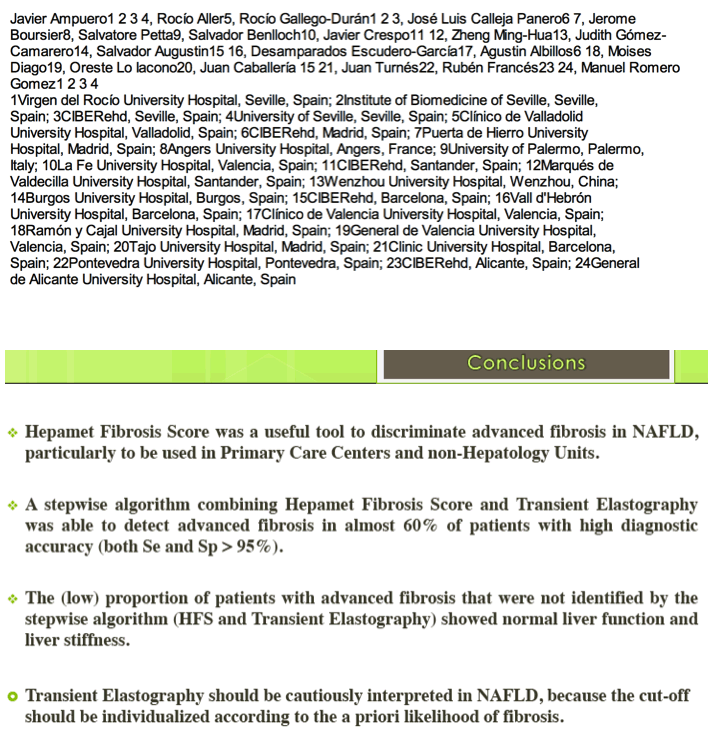
program abstract
Background and aims: A) To identify the baseline features of patients with hidden advanced fibrosis by transient elastography (TE); B) To assess the diagnostic accuracy of TE by using HEPAmet Fibrosis Score (HFS); C) To develop a stepwise algorithm between HFS and TE to improve the noninvasive detection of advanced fibrosis.
Method: International multicentre study including 885 biopsy-proven NAFLD patients (Spain n = 212, France n = 330, Italy n = 250, China n = 93). HFS (age, gender, DM, HOMA, albumin, AST, platelets), considering < 0.12 and > 0.47 as cut-offs, and TE were evaluated. Hidden advanced fibrosis was defined as TE < 9.5 kPa when F3 was shown in liver biopsy.
Results: Fibrosis distribution was: F0 24% (215/885), F1 28% (244/885), F2 22% (192/885), F3 20% (174/885), F4 7% (60/885).
A) Factors related to hidden advanced fibrosis (21% (48/234) were: BMI ( > 9.5 kPa 32.5+5 vs. < 9.5 kPa 29.7+4 kg/m2; p = 0.001), GGT ( > 9.5 kPa 169+229 vs. < 9.5 kPa 90+89 UI/L; p = 0.0001), HOMA ( > 9.5 kPa 9.6+9.5 vs. < 9.5 kPa 5.7+3.4; p = 0.0001), platelets ( > 9.5 kPa 191+62 vs. < 9.5 kPa 231+66; p = 0.0001).
B) TE values were: F0 6.4+2.8 kPa, F1 7.1+2.9 kPa, F2 9.6+4.7 kPa, F3 14.8+8.6 kPa, F4 25.1+15.9 kPa (p = 0.0001). kPa values according to fibrosis stage and HFS: F0 (HFS < 12: 6.2+2.7 vs. HFS 0.12-0.47: 8.3+2.8 vs. HFS > 0.47: 7.6+1.7; p = ns), F1 (HFS < 12: 6.9+2.6 vs. HFS 0.12-0.47: 7.8+3 vs. HFS > 0.47: 6.2+2; p = ns), F2 (HFS < 12: 8.7+3.5 vs. HFS 0.12-0.47: 10.6+5.1 vs. HFS > 0.47:
11.6+3.6; p = 0.002), F3 (HFS < 12: 11.2+4.2 vs. HFS 0.12-0.47: 13.4+6.5 vs. HFS > 0.47: 20.5+11.5; p = 0.0001), F4 (HFS < 12: 16.8+13.3 vs. HFS 0.12-0.47: 25.2+14 vs. HFS > 0.47: 29.2+17.1; p =0.005) (Figure).
C) A stepwise algorithm based on HFS and TE distinguished a lowest and highest risk group of advanced fibrosis that included 45% of the total population: a) HFS > 0.47 and TE > 17.8 kPa: advanced fibrosis in 97.7% (43/44); Se. 18% Sp. 99.9%, PPV 97.7%, NPV 77.3%, LR+ 119, LR- 0.82; b) HFS < 0.12 and TE < 6.7 kPa: advanced fibrosis in 2% (6/303); Se. 97.4% Sp. 45.7%, PPV 39.2%,
NPV 98%, LR+ 1.79, LR- 0.06.
Conclusion: Around 25% of patients with advanced fibrosis were not detected by TE, showing less
insulin resistance and BMI and also better liver function. Besides, kPa values were different in patients
with the same fibrosis stage when classified according to their HFS value. The stepwise algorithm
combining HFS and TE allowed the detection of advanced fibrosis with a diagnostic accuracy higher
than 98% in around 50% of NAFLD patients.
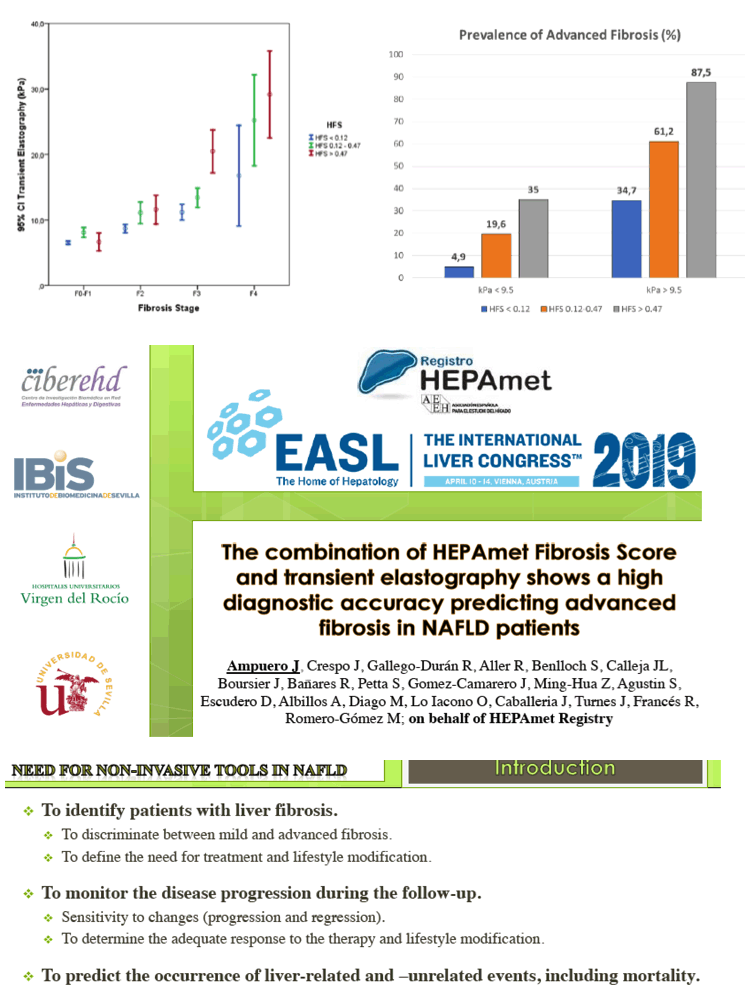
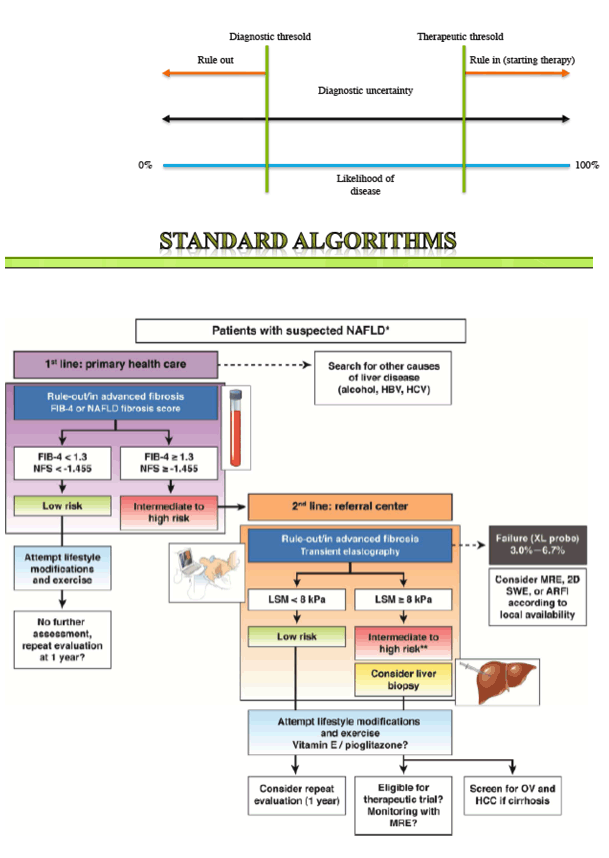
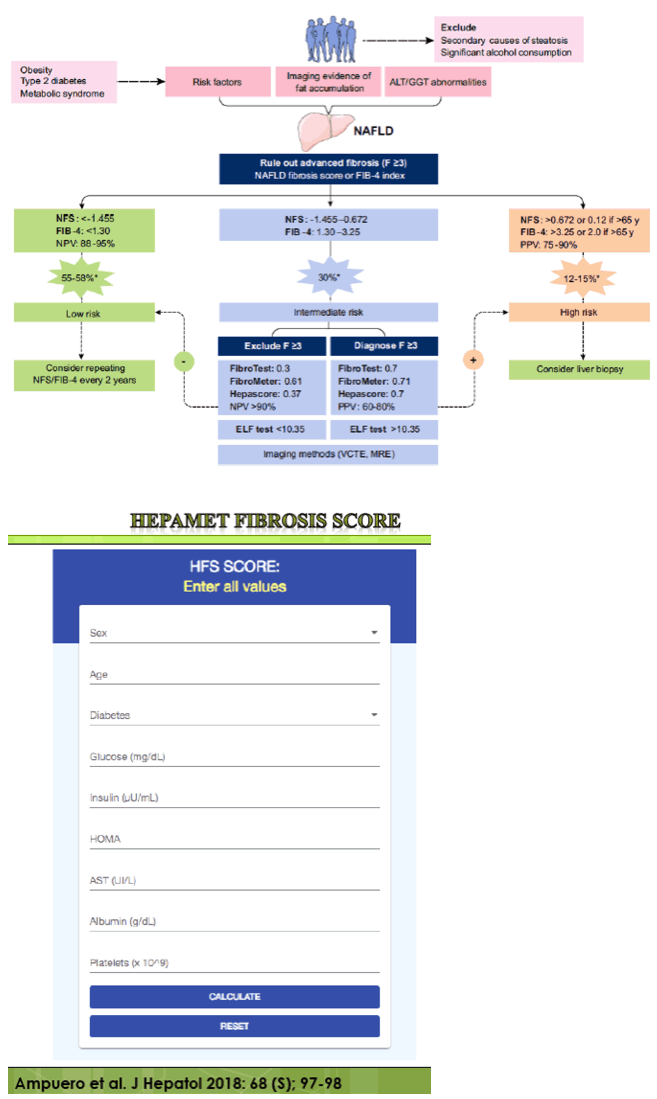
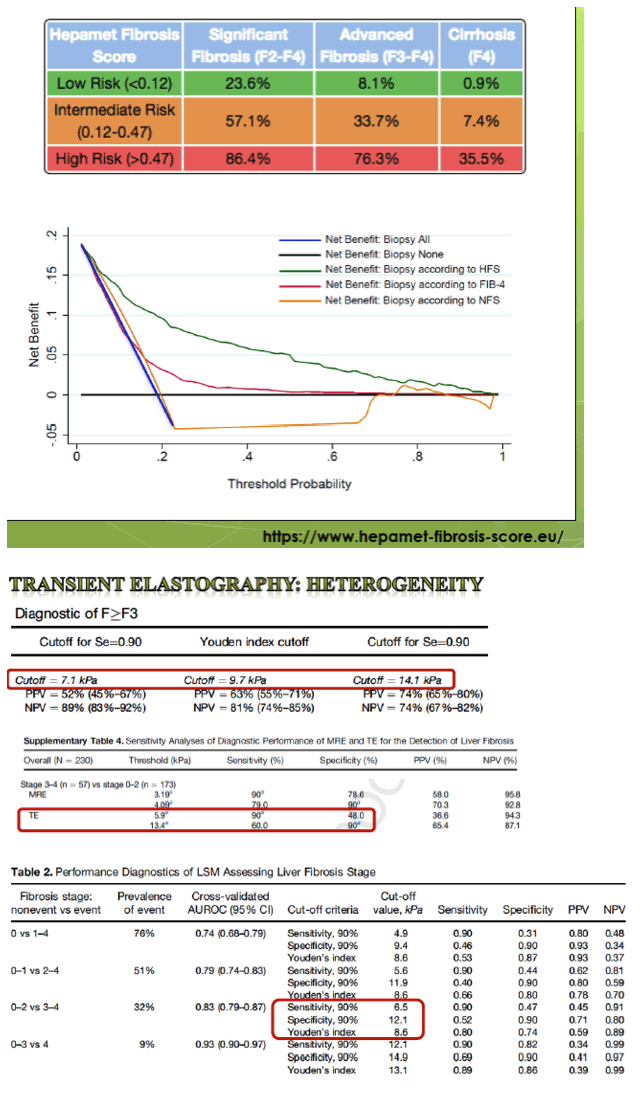
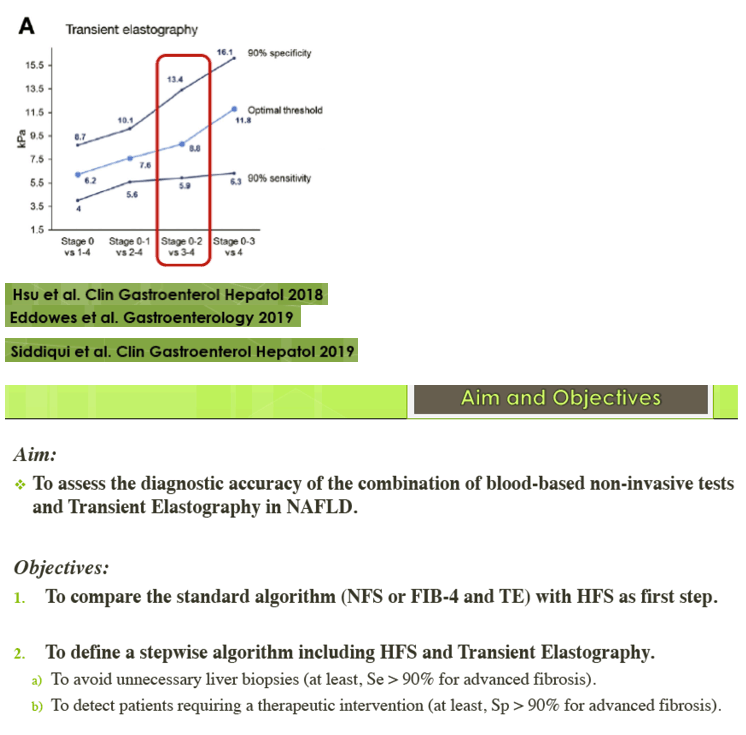
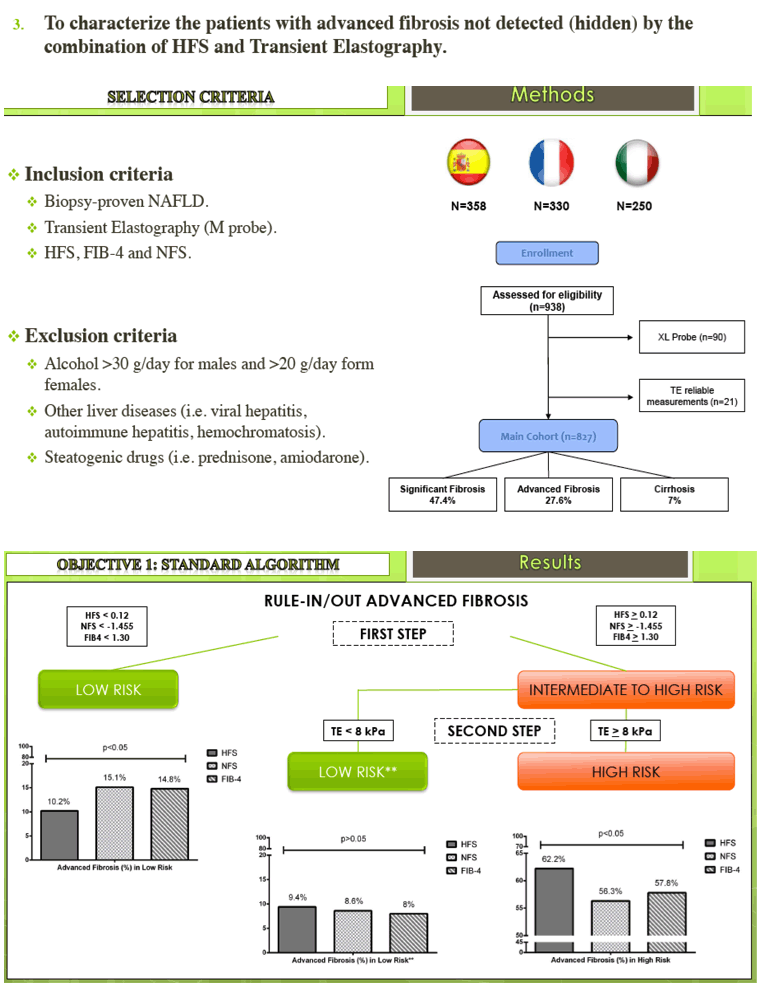
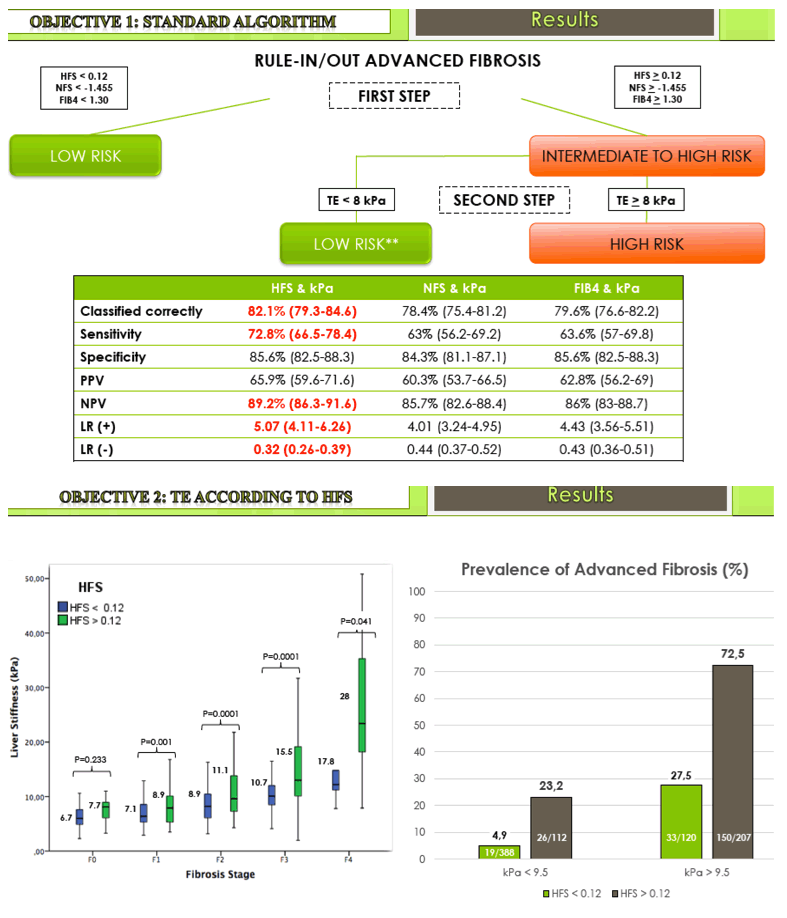
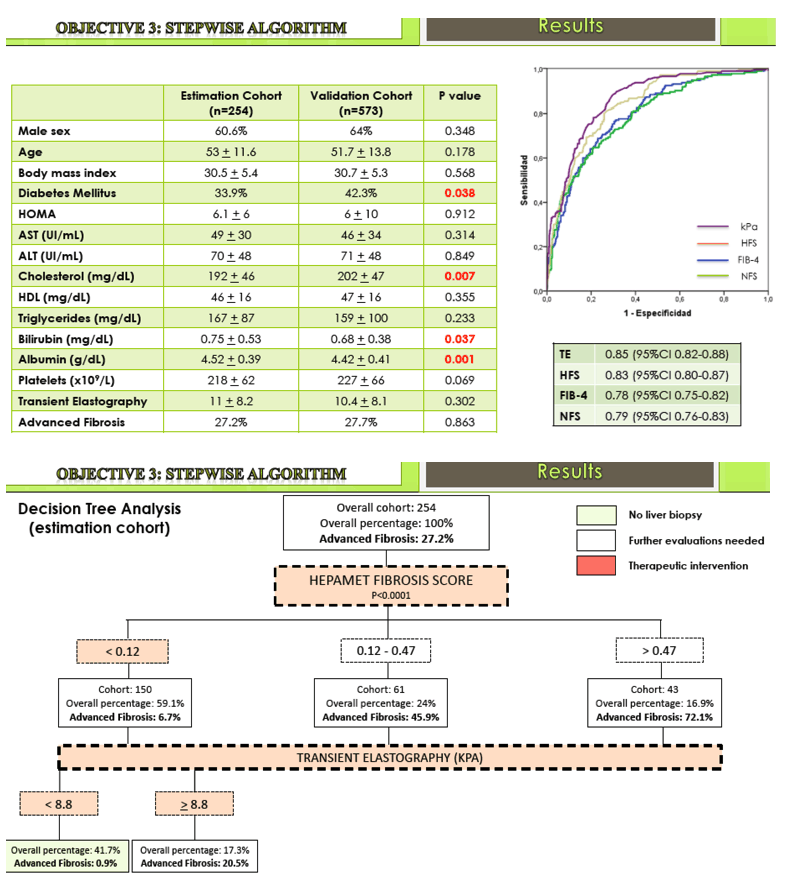
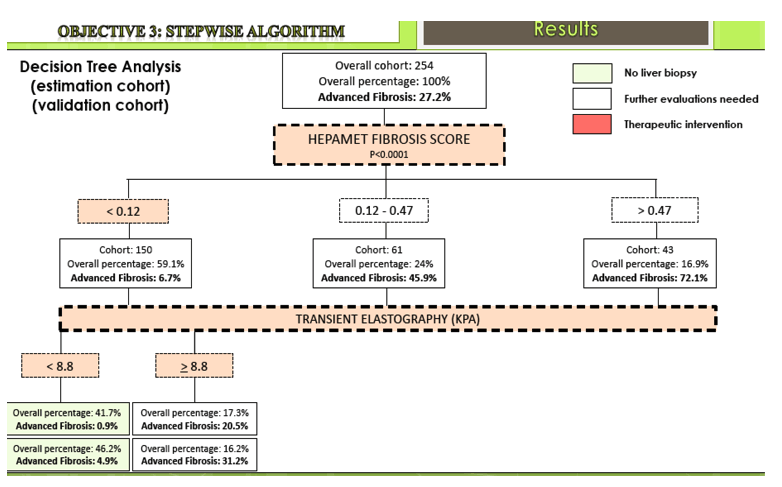

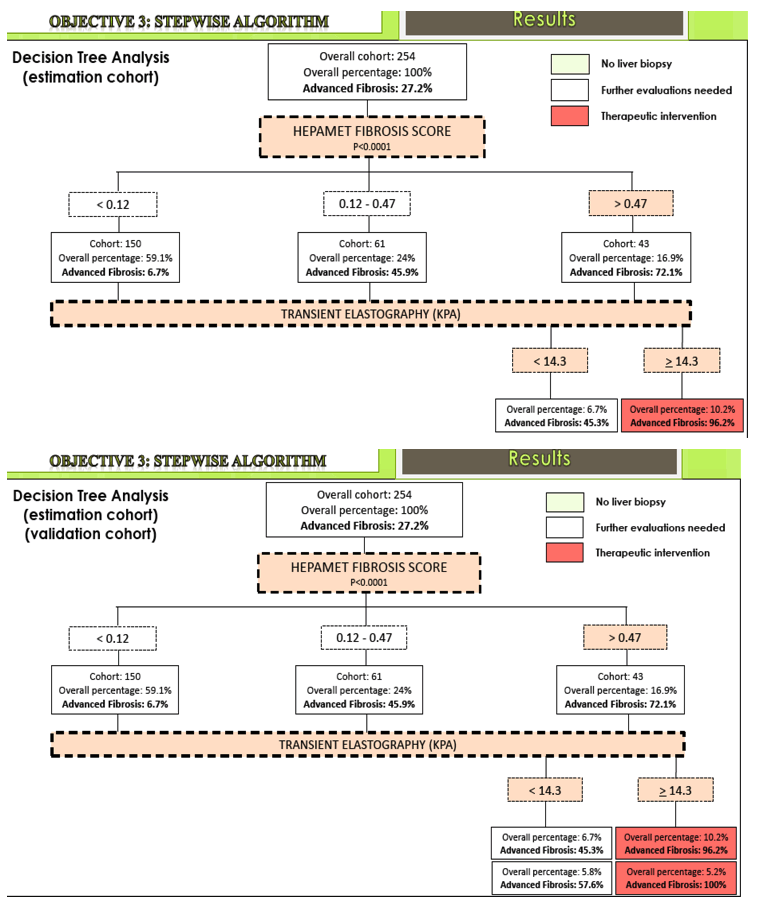
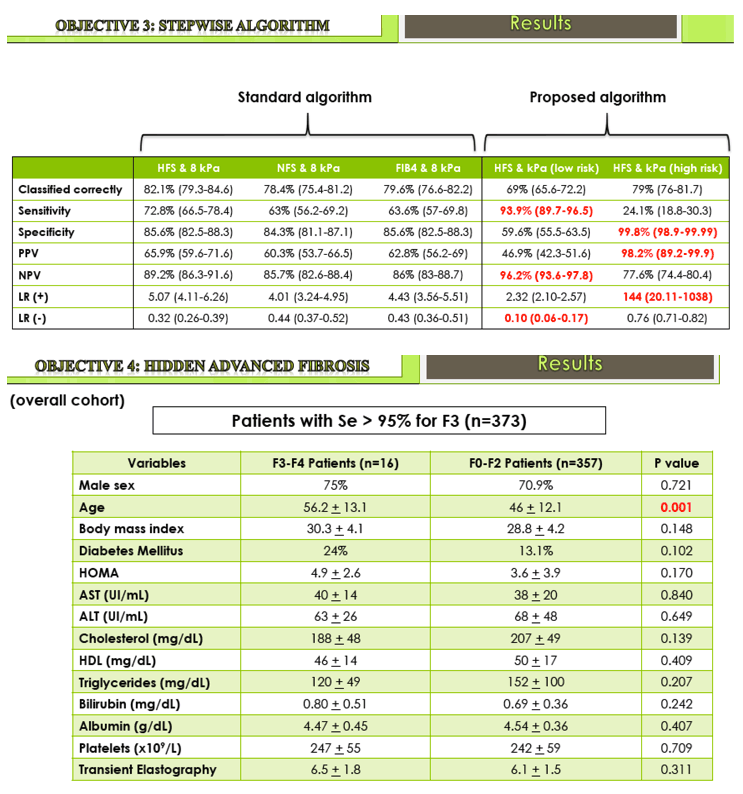
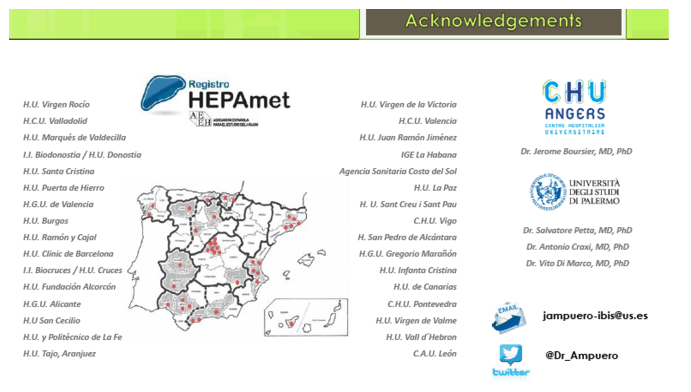
|
| |
|
 |
 |
|
|